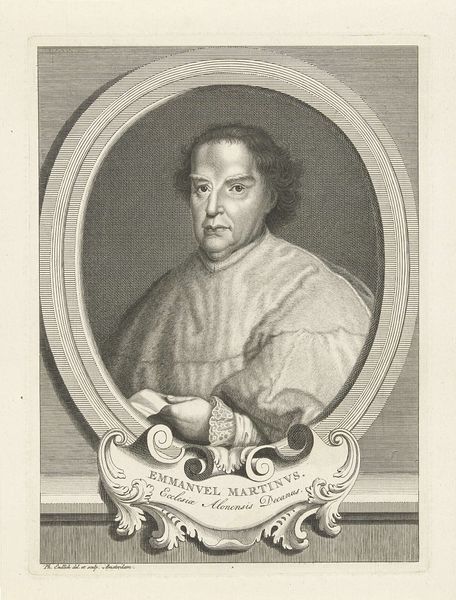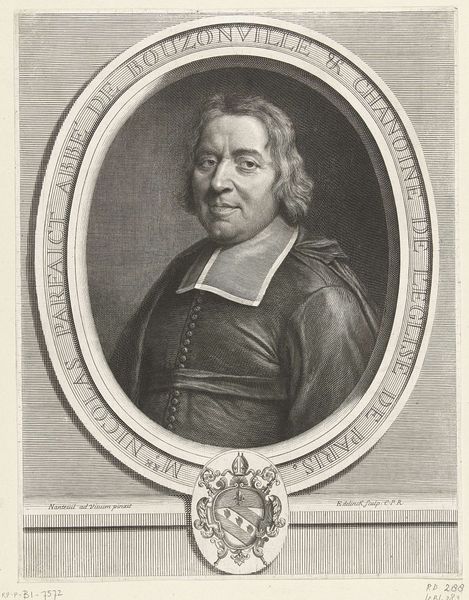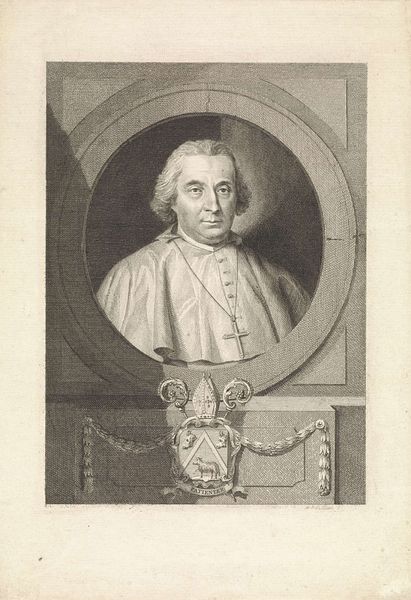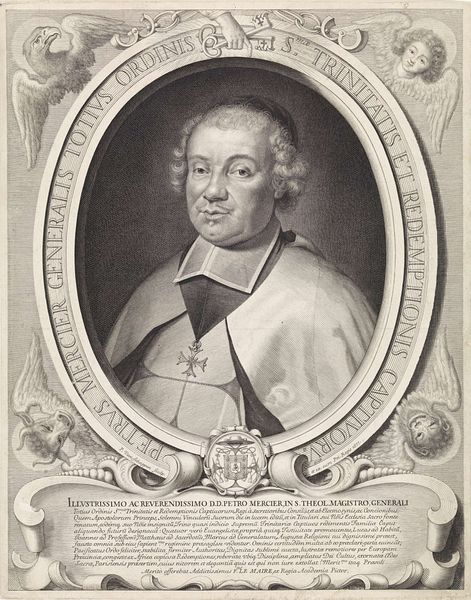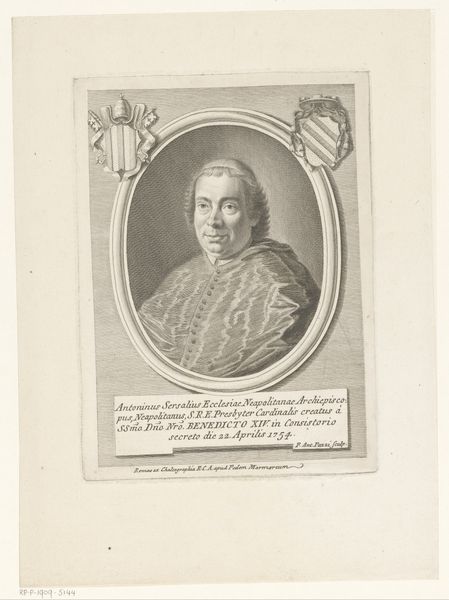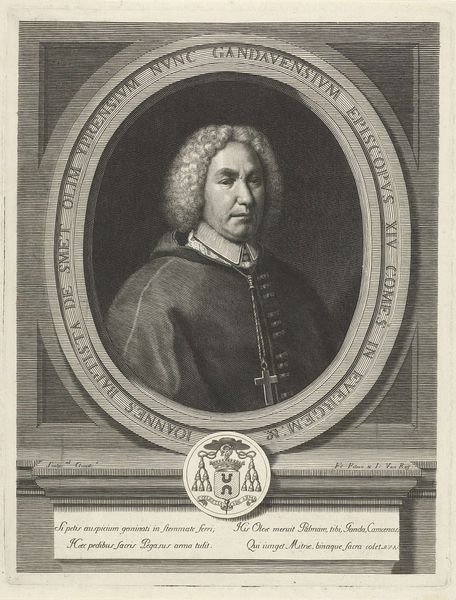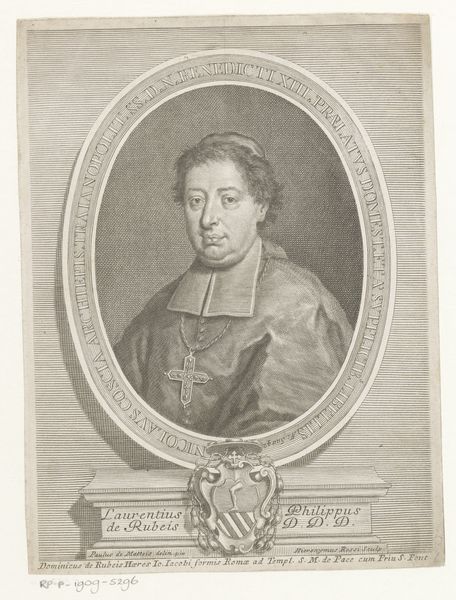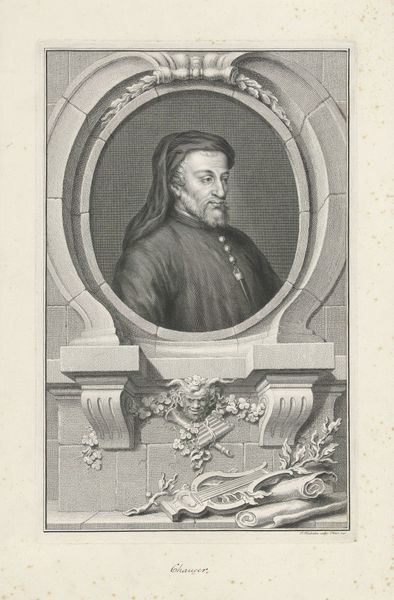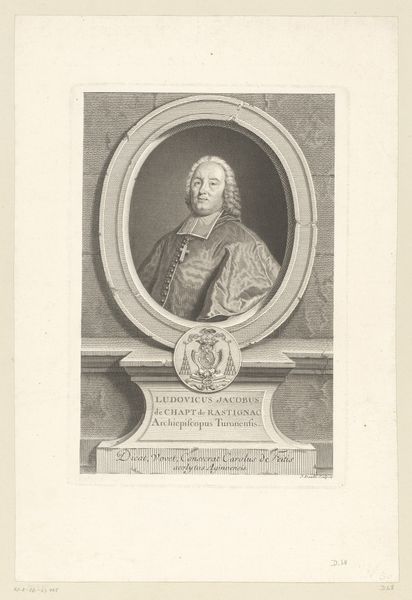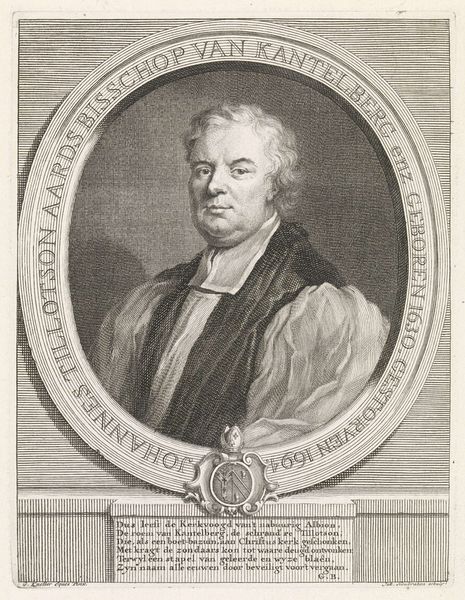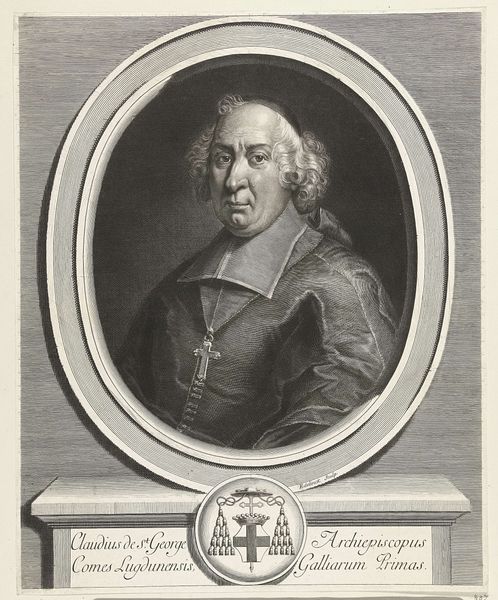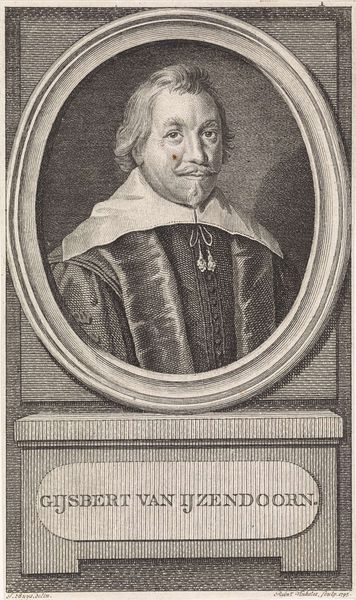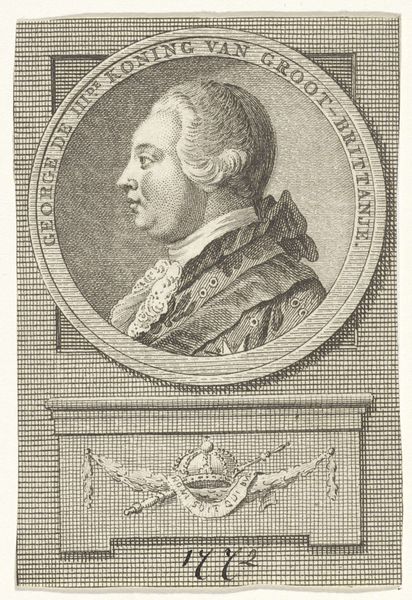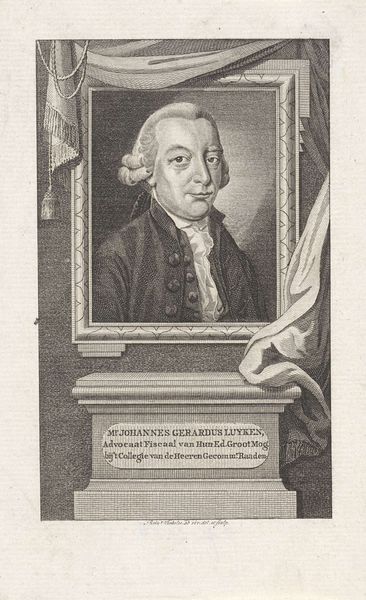
engraving
#
portrait
#
baroque
#
line
#
history-painting
#
engraving
Dimensions: height 263 mm, width 194 mm
Copyright: Rijks Museum: Open Domain
Curator: Well, let's consider this rather stately portrait of Pope Clemens XIII, produced in 1758. It's an engraving by Cornelis van Noorde, currently held at the Rijksmuseum. The detail in the lines is quite striking, even at a distance. Editor: My first impression is the sheer formality, even austerity of it. The oval frame, the precise engraving... it gives a very controlled sense, almost clinical in its detail. Curator: That clinical quality, as you call it, stems directly from the process. Engraving demands immense skill and labour. Consider the time invested in each precisely etched line; that's not just artistic talent but artisanal expertise. It shows the investment placed on the representation of authority. Editor: Absolutely. It is also clearly operating within a baroque tradition of portraiture. How might this print have functioned? As propaganda? Dissemination of imagery within the papal states and beyond? We must also remember the printing press was essential for reinforcing these power structures. Curator: Precisely. We need to think about printmaking as industry and not simply 'high art.' The lines aren’t just aesthetic choices, they're marks of labor that create reproductions that have been shared extensively and cheaply. Think about how different these engravings are from handmade painted portraiture - so much cheaper, available in much larger numbers... Editor: That's it precisely - the industrialization of imagery in the 18th century. An engraving like this places Clemens XIII directly into the public consciousness in a novel way. This would circulate not amongst elites necessarily but across various levels of society reinforcing ideas about piety and order. And it's all so calculated and designed. Curator: So what does this leave us thinking about then, in summary? Editor: Ultimately it highlights the critical intersection of image-making and societal control. It is not enough to focus simply on visual impact but instead to appreciate fully this work, alongside all artistic production of its kind, as actively shaping opinions and power dynamics. Curator: It also calls us to not see such art works just for aesthetic value but recognize these pieces for the sheer labor and investment embedded into them, these being crucial steps in forming history that shouldn’t be dismissed, particularly given its ubiquity today through readily reproduced modern imagery.
Comments
No comments
Be the first to comment and join the conversation on the ultimate creative platform.
